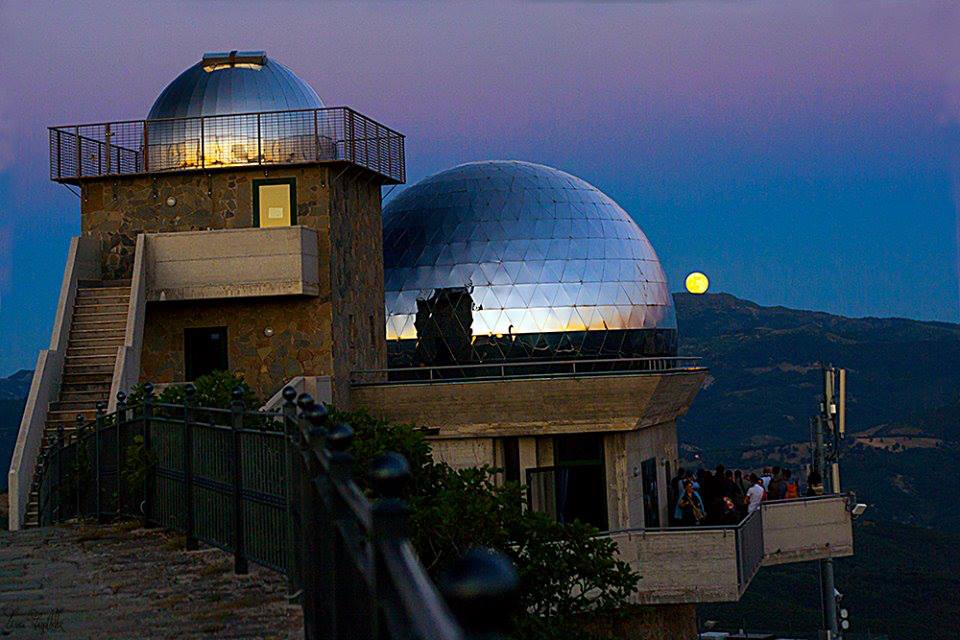"Wi-Fi Project Italy" was one of the first acts put in place, after only a month and a half since the inauguration of 28 May 2019, taking the opportunity offered by the Ministry of Economic Development in agreement with Infratel spa to allow all citizens to connect for free and in a simple way to a free and widespread Wi-Fi network throughout the country. Opportunities today even more appreciated given the social distance imposed by the Covid emergency that forces us to remote meetings, remote teaching, smart working, to visit the artistic and naturalistic beauties of Italy through dedicated apps.
In fact, the accession to the Wi-Fi Project Italy also aims to promote tourism by facilitating the access of citizens and visitors to the artistic, natural and cultural heritage of our beautiful Borgo, which is the second highest in Basilicata (1067 meters above sea). Right on the summit of Monte Siri is located the Church of Santa Maria (once the castle of the Carafa of Naples) that you keep the frescoes of 1559 by Giovanni Todisco, unique in Basilicata for the size of the painting, for stylistic modernity and for the excellent state of preservation after the restoration. The cycle of the life of Our Lady and Jesus culminates in a wonderful Nativity in which Todisco also inserts elements of peasant culture and food in use at the time (two Lucan caciocavalli make a beautiful display of themselves in the cave).
A few meters from the Church is the Planetarium Astronomical Observatory of Basilicata, from which you can see 360 degrees the whole valley, the country, the Camastra Dam, the Lucan Dolomites). The Planetarium Astronomical Observatory of Basilicata, one of the most important centers in Italy on scientific and astronomical dissemination, is a structure consisting of a planetarium and an observatory. In the Dome with a diameter of 12 meters of the Planetarium, through a sophisticated play of lights, you can admire the wonders of the whole celestial vault, the amazement of the starry sky free of atmospheric pollution, without the disturbance of night lighting and without clouds. In the dome you can see about 4500 stars of the Borealis Sky, from the constellation Cassiopeia to the fascinating constellations of the Zodiac even with virtual reality viewers.
Another attractor is the stable Polysonic Nativity Scene. It is the fourth nativity scene in Europe in size, divided into ten scenes that tell ten episodes of Jesus' life. In each scene you can admire evocative and fascinating settings. In the first scene, that of the Annunciation, you can see in the foreground, on the left, an edge of Calvello. In the second, the census, there are in the background the Stones of Matera. Then the palace of Herod, followed by the announcement of the shepherds with Castelmezzano and the Lucan Dolomites in plain sight. In the center, the fifth scene, the Bethlehem cave made from a rock extracted from the fiumara of Anzi, whose limestone sedimentation, according to some experts, goes back as far as 1500 years ago. The sixth scene, with the escape to Egypt, highlights the temple of Esna 55 kilometers south of Luxor historically relevant to the impressive ruins of the temple, dedicated to the god Khnum, to which we were inspired. The slaughter of the innocent followed, with glimpses of Power, and the majestic temple of Jerusalem with Jesus presented to Simeon. And then Nazareth, which is exactly a faithful reproduction of Anzi, with its alleys, the houses built on the rock and the church of St. Mary at the top. Finally, the discovery of 12-year-old Jesus in the temple among the doctors of the law (Torah), interpreter of the word of God. Also special are the papier-mache statues made in Lecce.
Indeed, it is also a site of considerable archaeological importance. The first excavations date back to 1797 and still are active several excavation activities by the University of Basilicata and the Superintendent archaeology Fine Arts and Landscape of Basilicata. In addition to important finds in the 19th century, it was famous for training expert diggers of archaeological finds, in fact the experts worked on excavations throughout the region. Thanks to the many discoveries and skills of the diggers, the wealthy Fittipaldi family in the nineteenth century formed a private collection among the most important in Italy consisting of thousands of artifacts that today are found in the most important museums in the world, from the Louvre, to the National, to the Hermitage.
Before arriving at the village a visit to the magnificent forest of Anzi is a must. Here the mushrooms and black truffle are at home. The anzese truffle, however, is renowned as one of the best in the Lucan undergrowth.
